Bert's Town - Part 07 - Moving On
w/e 23 August 2009
All this week's pictures were taken
with a Kodak DX6490

In the late 1800s and early 1900s the settlement
at The Breach was separated from Eastwood by fields and allotment
gardens but footpaths between the two connected the communities.

It is along roughly the same route as those paths that we now
follow the blue painted line that runs through gitties, twitchels
and the post war development of the area to reach The Breach.
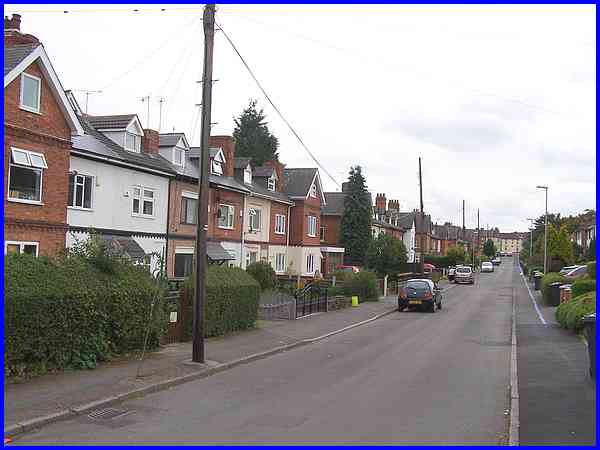
Since the days of D. H. Lawrence, The Breach has been renamed
Garden Road but the properties on the left although modernised
are still reminiscent of his time. In this view looking towards
Lynncroft, newer properties have been constructed on the right
in the latter half of the twentieth century but this image at the Picture The Past site dating
from 1958 shows how the area appeared before the new development
and is more in keeping with Bert's time here.
|
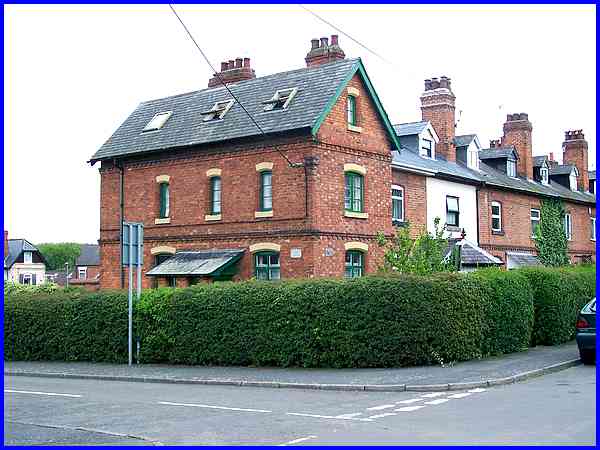
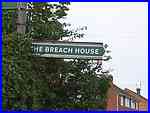 About
two thirds of the way along Garden Road a link road runs through
to the parallel Greenhills Road and it was in this corner house
that the seven members of the Lawrence family moved from Victoria
Street in 1887 when Bert was two years old. It is now 28 Garden
Road but back then it was 57 The Breach and today a sign About
two thirds of the way along Garden Road a link road runs through
to the parallel Greenhills Road and it was in this corner house
that the seven members of the Lawrence family moved from Victoria
Street in 1887 when Bert was two years old. It is now 28 Garden
Road but back then it was 57 The Breach and today a sign 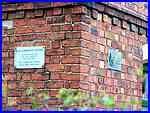 (left) reading
"The Breach House" points to the property. (left) reading
"The Breach House" points to the property.
Two plaques at the corner of the house (right) also verify the
future author's residency and an information board in the garden
gives some interesting details. Being a corner house, it had
extra space and this meant the rent was sixpence a week higher
than adjacent properties. The Lawrences remained here until 1891
when they moved on again to a house in Walker Street.
The information board also reveals that Bert used the house in
The Breach as the basis for "The Bottoms" in his novel
"Sons and Lovers" setting many scenes in the kitchen
but also that he said "It was a little less common to live
in The Breach". There's another 1958 image at Picture The Past.
|

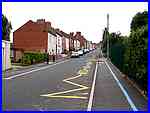 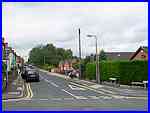 Like the Lawrences
we'll now move on and follow the Blue Line Trail again to the
end of Garden Road turning right into Lynncroft (left) and crossing
the end of Walker Street (right). We will shortly have to backtrack
to Walker Street but for now the route continues up the hill
to terminate at the fourth house in which the family resided.
From near the top of the hill this is the view back down Lynncroft. Like the Lawrences
we'll now move on and follow the Blue Line Trail again to the
end of Garden Road turning right into Lynncroft (left) and crossing
the end of Walker Street (right). We will shortly have to backtrack
to Walker Street but for now the route continues up the hill
to terminate at the fourth house in which the family resided.
From near the top of the hill this is the view back down Lynncroft.
|
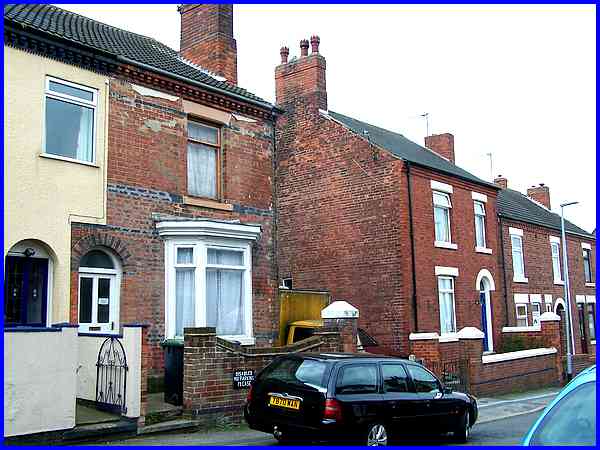
They were here at 98 Lynncroft between 1905 and 1911 and lived
in the house with the bay window. Another of Bert's lesser known
works is called "Aaron's Rod" and Aaron's home in the
book is based on the the neighbouring property down the hill.
Another information board, the seventh on the Trail, a little
further down Lynncroft states that the move here "represented
success for the family in their constant struggle for social
and material improvement." It goes on to add that the
house had a garden and a field at the back and that Lydia, Bert's
mother, had a girl Minnie to help with the housework. It was
whilst living here that Bert, now a young man, worked at the
British School in Albert Street and trained at Ilkeston but also
lost his "love of loves" when Lydia died in 1910.
|
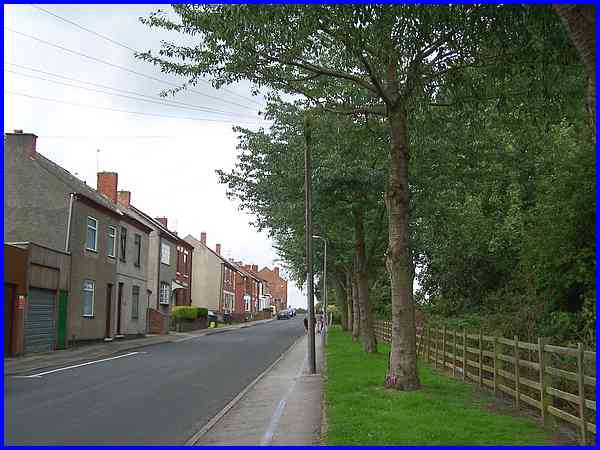
Returning now back down the hill we enter Walker Street where
the undulating land on the right hand side was once the source
of clay for the Lynncroft Pottery.
|
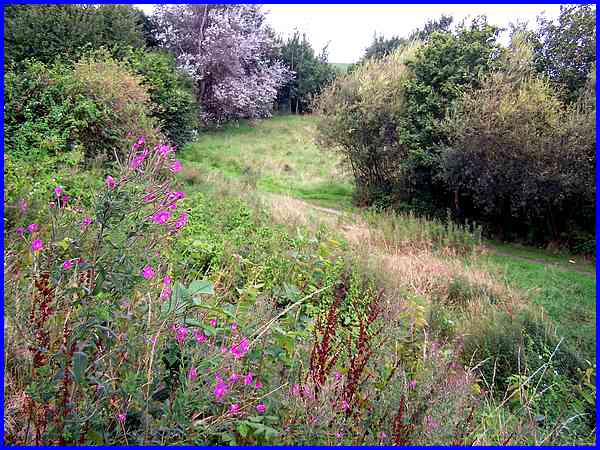
The area became known locally as The Canyons and the nearby information
board is headed "the best playground one could have."
This quotation comes from his sister's biography and describes
the fields that stretched to The Breach. The Lawrences lived
on Walker Street after The Breach and before Lynncroft in a house
built by the Mellor family, the owners of the pottery. Bert again
drew on his knowledge of the family and the area as a basis for
his short story "You Touched Me" first published in
1922. Since 1987 The Canyons has been developed as a conservation
area enabling local schoolchildren to visit as part of their
environmental studies.
|

